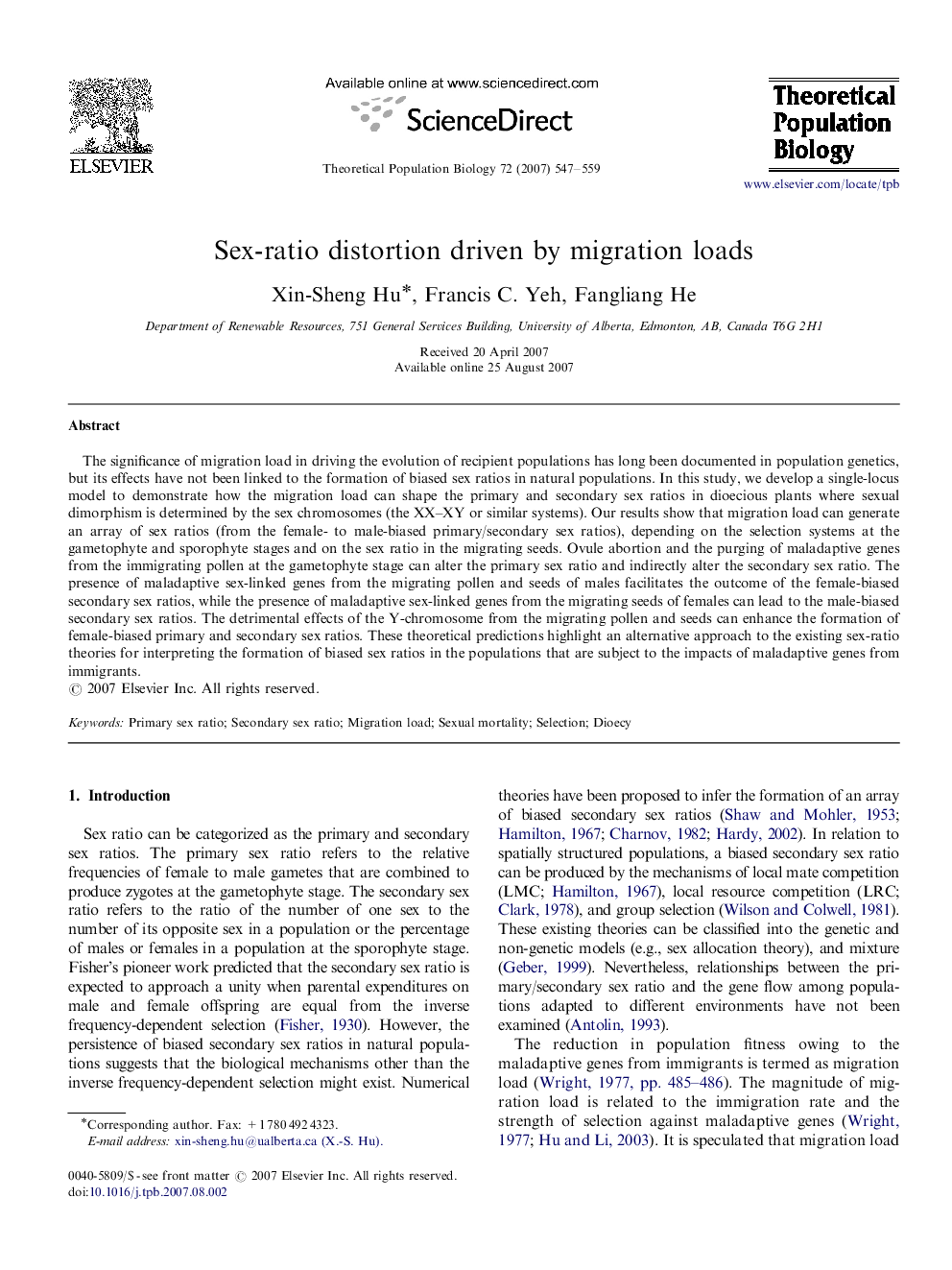| کد مقاله | کد نشریه | سال انتشار | مقاله انگلیسی | نسخه تمام متن |
|---|---|---|---|---|
| 4502976 | 1320614 | 2007 | 13 صفحه PDF | دانلود رایگان |

The significance of migration load in driving the evolution of recipient populations has long been documented in population genetics, but its effects have not been linked to the formation of biased sex ratios in natural populations. In this study, we develop a single-locus model to demonstrate how the migration load can shape the primary and secondary sex ratios in dioecious plants where sexual dimorphism is determined by the sex chromosomes (the XX–XY or similar systems). Our results show that migration load can generate an array of sex ratios (from the female- to male-biased primary/secondary sex ratios), depending on the selection systems at the gametophyte and sporophyte stages and on the sex ratio in the migrating seeds. Ovule abortion and the purging of maladaptive genes from the immigrating pollen at the gametophyte stage can alter the primary sex ratio and indirectly alter the secondary sex ratio. The presence of maladaptive sex-linked genes from the migrating pollen and seeds of males facilitates the outcome of the female-biased secondary sex ratios, while the presence of maladaptive sex-linked genes from the migrating seeds of females can lead to the male-biased secondary sex ratios. The detrimental effects of the Y-chromosome from the migrating pollen and seeds can enhance the formation of female-biased primary and secondary sex ratios. These theoretical predictions highlight an alternative approach to the existing sex-ratio theories for interpreting the formation of biased sex ratios in the populations that are subject to the impacts of maladaptive genes from immigrants.
Journal: Theoretical Population Biology - Volume 72, Issue 4, December 2007, Pages 547–559